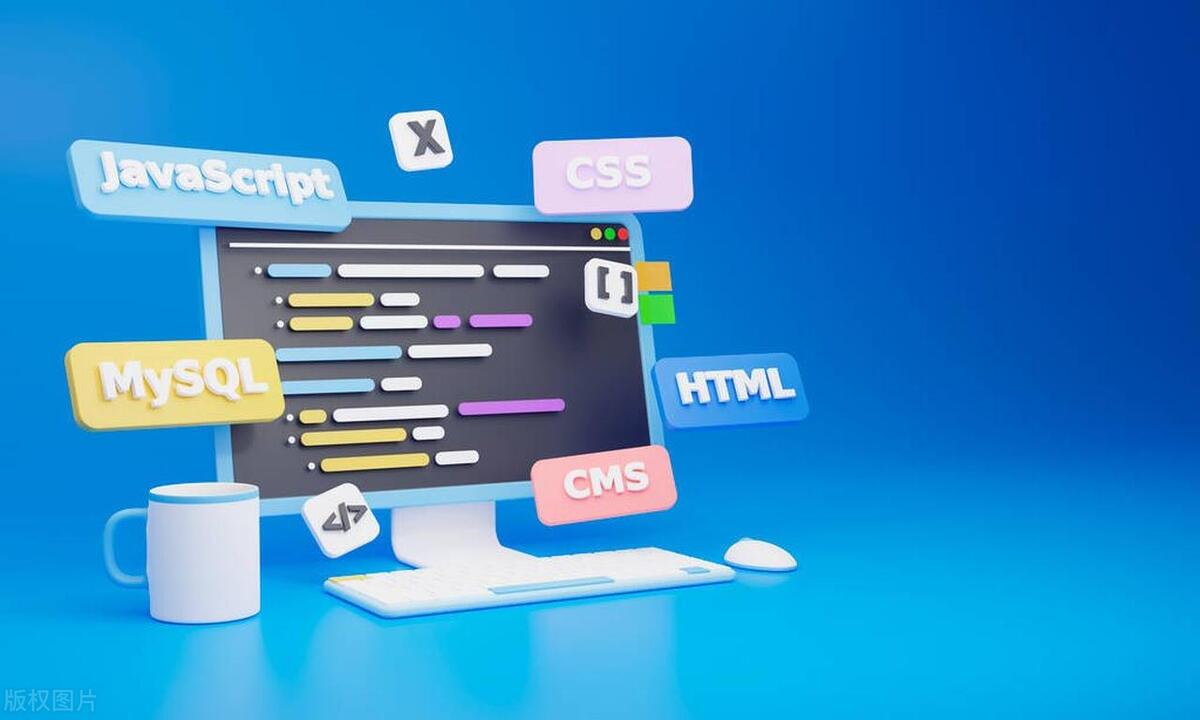Whether to choose Vite or Vue CLI depends on project requirements and development priorities. 1. Startup speed: Vite uses the browser's native ES module loading mechanism, which is extremely fast and cold-start, usually completed within 300ms, while Vue CLI uses Webpack to rely on packages and is slow to start; 2. Configuration complexity: Vite starts with zero configuration, has a rich plug-in ecosystem, which is suitable for modern front-end technology stacks, Vue CLI provides comprehensive configuration options, suitable for enterprise-level customization but has high learning costs; 3. Applicable project types: Vite is suitable for small projects, rapid prototype development, and projects using Vue 3. Vue CLI is more suitable for medium and large enterprise projects or projects that need to be compatible with Vue 2; 4. Plug-in ecosystem: Vue CLI has a complete ecosystem but is slow to update, Vite develops rapidly, and integrates new technologies actively.

Choose Vue CLI or Vite? It depends on the actual needs of your project and the priority of your development experience. If you are pursuing fast start, modern module support and lightweight configuration, Vite is a better choice; and if you need a mature, highly integrated scaffolding tool for mid-to-large projects, Vue CLI is still worth considering.

1. Startup speed comparison: Vite is obviously faster
The biggest advantage of Vite is its "extremely fast cold start". It utilizes the browser's native ES module loading mechanism. It does not require packaging in development mode, and directly loads modules on demand, so the project is started almost instantly.

- Vue CLI uses Webpack, and you must first package all dependencies when starting, and the larger the project, the slower it will be.
- Vite is hardly built during the development stage and is only packaged with Rollup in production environments.
For example: A Vue project that has just been initialized, the Vite startup time is usually within 300ms, while the Vue CLI may take 2~5 seconds or even longer.
2. Configuration complexity: Vite is simpler, Vue CLI is more comprehensive
The concept of Vite is to start with "zero configuration" and is suitable for modern front-end projects, especially projects that use technology stacks such as TypeScript, JSX, CSS preprocessors. Its configuration files are very simple and the plug-in ecosystem is becoming more and more abundant.

Vue CLI provides a complete set of configurable UI and plug-in systems suitable for enterprise-level projects or scenarios where a large number of customized build processes are required. But it also brings higher learning costs and maintenance burdens.
Common configuration differences include:
- Babel and TypeScript support: Vite basically supports by default, just install plug-ins
- CSS preprocessing: Both support it, but the Vite approach is closer to the native import approach
- Environment variable management: Vite is more flexible and Vue CLI is more structured
3. Applicable project types: Depend on scale and target environment
If you are working on the following types of projects, Vite is the first choice:
- Rapid prototyping
- Small component library, demo page
- Projects using Vue 3 Composition API
- New projects that require SSR or server rendering (Vite supports SSR better and better)
And Vue CLI is more suitable for these situations:
- Medium- and large enterprise-level projects
- Need to be a Vue 2-compatible old project migration
- The team is already familiar with the Webpack construction system
- Deep optimization of packaging volume and loading performance is required
4. Plugin Ecology and Community Support
As an old tool, Vue CLI has a very complete plug-in ecosystem, rich community documents, and it is easy to find solutions when encountering problems. But it is updated less frequently, and some plugins may not keep up with the latest technology trends.
Although Vite is young, it is developing rapidly, and the official support for mainstream frameworks (React/Vue/Svelte), and the number of plug-ins is also growing rapidly. The integration of new technologies such as SWC and ESBuild is more active.
Basically these differences. You can decide based on your project type and team habits. If you start a new project from scratch, it is recommended to give priority to Vite, which is really much faster.
The above is the detailed content of Vue CLI vs Vite: Choosing Your Build Tool. For more information, please follow other related articles on the PHP Chinese website!

Hot AI Tools

Undress AI Tool
Undress images for free

Undresser.AI Undress
AI-powered app for creating realistic nude photos

AI Clothes Remover
Online AI tool for removing clothes from photos.

Clothoff.io
AI clothes remover

Video Face Swap
Swap faces in any video effortlessly with our completely free AI face swap tool!

Hot Article

Hot Tools

Notepad++7.3.1
Easy-to-use and free code editor

SublimeText3 Chinese version
Chinese version, very easy to use

Zend Studio 13.0.1
Powerful PHP integrated development environment

Dreamweaver CS6
Visual web development tools

SublimeText3 Mac version
God-level code editing software (SublimeText3)

Hot Topics
 How does React handle focus management and accessibility?
Jul 08, 2025 am 02:34 AM
How does React handle focus management and accessibility?
Jul 08, 2025 am 02:34 AM
React itself does not directly manage focus or accessibility, but provides tools to effectively deal with these issues. 1. Use Refs to programmatically manage focus, such as setting element focus through useRef; 2. Use ARIA attributes to improve accessibility, such as defining the structure and state of tab components; 3. Pay attention to keyboard navigation to ensure that the focus logic in components such as modal boxes is clear; 4. Try to use native HTML elements to reduce the workload and error risk of custom implementation; 5. React assists accessibility by controlling the DOM and adding ARIA attributes, but the correct use still depends on developers.
 Describe the difference between shallow and full rendering in React testing.
Jul 06, 2025 am 02:32 AM
Describe the difference between shallow and full rendering in React testing.
Jul 06, 2025 am 02:32 AM
Shallowrenderingtestsacomponentinisolation,withoutchildren,whilefullrenderingincludesallchildcomponents.Shallowrenderingisgoodfortestingacomponent’sownlogicandmarkup,offeringfasterexecutionandisolationfromchildbehavior,butlacksfulllifecycleandDOMinte
 What is the significance of the StrictMode component in React?
Jul 06, 2025 am 02:33 AM
What is the significance of the StrictMode component in React?
Jul 06, 2025 am 02:33 AM
StrictMode does not render any visual content in React, but it is very useful during development. Its main function is to help developers identify potential problems, especially those that may cause bugs or unexpected behavior in complex applications. Specifically, it flags unsafe lifecycle methods, recognizes side effects in render functions, and warns about the use of old string refAPI. In addition, it can expose these side effects by intentionally repeating calls to certain functions, thereby prompting developers to move related operations to appropriate locations, such as the useEffect hook. At the same time, it encourages the use of newer ref methods such as useRef or callback ref instead of string ref. To use Stri effectively
 Vue with TypeScript Integration Guide
Jul 05, 2025 am 02:29 AM
Vue with TypeScript Integration Guide
Jul 05, 2025 am 02:29 AM
Create TypeScript-enabled projects using VueCLI or Vite, which can be quickly initialized through interactive selection features or using templates. Use tags in components to implement type inference with defineComponent, and it is recommended to explicitly declare props and emits types, and use interface or type to define complex structures. It is recommended to explicitly label types when using ref and reactive in setup functions to improve code maintainability and collaboration efficiency.
 Server-Side Rendering with Next.js Explained
Jul 23, 2025 am 01:39 AM
Server-Side Rendering with Next.js Explained
Jul 23, 2025 am 01:39 AM
Server-siderendering(SSR)inNext.jsgeneratesHTMLontheserverforeachrequest,improvingperformanceandSEO.1.SSRisidealfordynamiccontentthatchangesfrequently,suchasuserdashboards.2.ItusesgetServerSidePropstofetchdataperrequestandpassittothecomponent.3.UseSS
 How to handle forms in Vue
Jul 04, 2025 am 03:10 AM
How to handle forms in Vue
Jul 04, 2025 am 03:10 AM
There are three key points to be mastered when processing Vue forms: 1. Use v-model to achieve two-way binding and synchronize form data; 2. Implement verification logic to ensure input compliance; 3. Control the submission behavior and process requests and status feedback. In Vue, form elements such as input boxes, check boxes, etc. can be bound to data attributes through v-model, such as automatically synchronizing user input; for multiple selection scenarios of check boxes, the binding field should be initialized into an array to correctly store multiple selected values. Form verification can be implemented through custom functions or third-party libraries. Common practices include checking whether the field is empty, using a regular verification format, and displaying prompt information when errors are wrong; for example, writing a validateForm method to return the error message object of each field. You should use it when submitting
 What is content security policy CSP
Jul 04, 2025 am 03:21 AM
What is content security policy CSP
Jul 04, 2025 am 03:21 AM
Content Security Policy (CSP) prevents attacks such as XSS by limiting the loading source of web page resources. Its core mechanism is to set a whitelist to prevent unauthorized scripts from being executed. The steps to enable include: 1. Define the policy and clarify the allowed resource sources; 2. Add Content-Security-PolicyHTTP header to the server; 3. Use Report-Only mode to test and debug in the initial stage; 4. Continuous monitoring and optimization strategies to ensure that they do not affect normal functions. Notes include handling inline scripts, careful use of third-party resources, compatibility support, and other irreplaceable security measures.
 Vue CLI vs Vite: Choosing Your Build Tool
Jul 06, 2025 am 02:34 AM
Vue CLI vs Vite: Choosing Your Build Tool
Jul 06, 2025 am 02:34 AM
Vite or VueCLI depends on project requirements and development priorities. 1. Startup speed: Vite uses the browser's native ES module loading mechanism, which is extremely fast and cold-start, usually completed within 300ms, while VueCLI uses Webpack to rely on packaging and is slow to start; 2. Configuration complexity: Vite starts with zero configuration, has a rich plug-in ecosystem, which is suitable for modern front-end technology stacks, VueCLI provides comprehensive configuration options, suitable for enterprise-level customization but has high learning costs; 3. Applicable project types: Vite is suitable for small projects, rapid prototype development and projects using Vue3, VueCLI is more suitable for medium and large enterprise projects or projects that need to be compatible with Vue2; 4. Plug-in ecosystem: VueCLI is perfect but has slow updates,






